|
A Key to the superfamilies of the Lepidoptera
with special reference to North and South Dakota
|
14(13').
Tympanal organs located on the metathorax, hidden in
the vestiture of especially 'hairy' moths. Fw venation usually
quadrifid. Frenulum/ retinaculum wing
coupling mechanism present. F/Hws almost always with
dissimilar color patterns. Exceptions have tympanum most easily visible, or moth is marked contrastingly with orange or
red on thorax or abdomen. Mostly small to medium sized moths,
'millers.' Superfamily Noctuoidea |
About 1/2 of all
Lepidoptera belong to this superfamily. Based largely upon molecular
evidence, the classification of this group has undergone significant and
extensive revision. Families and other traditional groupings of Noctuoidea
are separated as follows.
|
14'
Tympanal organs located on 1st or 2nd abdominal segment, can be difficult to
discern in dried specimens when abdomen is appressed to thorax. Fw
venation nearly always trifid. Frenulum/ retinaculum wing coupling mechanism
virtually always present.
F/Hws almost always with similar color patterns. Mostly small to medium sized
'butterfly-like' delicate moths. (See also 14" below.)
Go to 15. |
|
14"
Tympanal organs absent on thorax or abdomen. Fw venation
trifid or quadrifid. Proboscis length variable, most
often atrophied or absent when frenulum atrophied or absent; if proboscis
well developed (usually longer than the body), then frenulum is well
developed and the abdomen extends for at least ½ its length beyond
hindwings. Often very stout bodied and ‘woolly,’ medium to large moths, many
are among the largest of Lepidoptera.
Go to 16. |
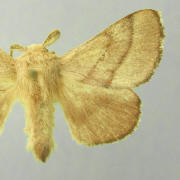
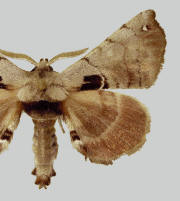
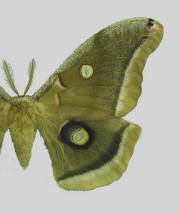
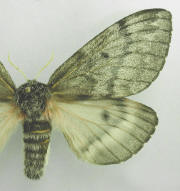
|
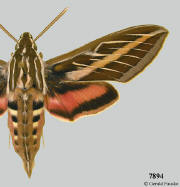
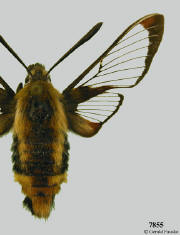
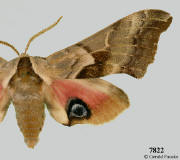

|
Top row left to right: Malacosoma
disstria Hübner, Apatelodes torrefacta
(J.E. Smith), Antheraea polyphemus (Cramer), Coloradia pandora
(Blake).
Bottom row left to right: Hyles lineata (Fabricius), Hemaris
diffinis (Boisduval), Smerinthus cerisyi (Kirby), Manduca
quinquemaculata (Haworth) |
Return to beginning of
Key
Return to Key introduction
|
